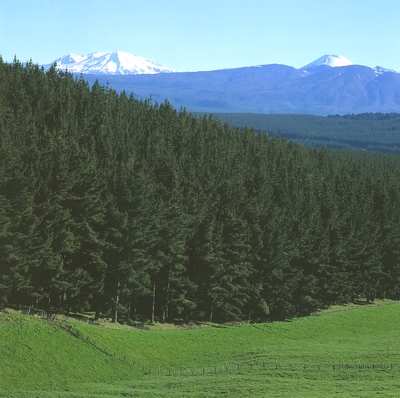Taking carbon into account

Scion is a major player in developing robust carbon modelling methods and inventory procedures for assessing carbon stocks in planted and indigenous forests.
Over the past decade, Scion has worked closely with the Ministry for the Environment (MfE) and Ministry for Primary Industries (MPI) to develop methods for measuring and forecasting forest carbon stocks. These methods are an integral part of New Zealand’s Land Use and Carbon Analysis System (LUCAS), run by MfE. The information is used at a national level to satisfy international reporting requirements under the Kyoto Protocol.
Scion CEO Dr Warren Parker says that New Zealand is in the fortunate position of being able to use carbon stored by forests to offset a large portion of our national greenhouse gas emissions, avoiding significant cost under Kyoto commitments.
“Scion’s expertise and long-term research programmes have played a major role in making this possible,” he says.
To meet the challenge of calculating carbon in planted forests, Scion has combined its carbon prediction model - known as C_Change - with complex growth models. At the heart of the carbon forecasting system is the 300 Index growth model for radiata pine and the 500 Index for Douglas-fir. Both of these models are routinely used by the forest industry to forecast growth and yield of wood products.
Scion’s leader of carbon research Dr Peter Beets says the advantage of this system is that it can accurately account for the impacts of silviculture when predicting carbon sequestration.
“Pruning, thinning and harvesting operations have a large impact on carbon stocks. So does wood density. The growth models used to forecast carbon take all of these complex factors into account,” Peter explains.
The trading of carbon domestically and internationally is creating an important new revenue stream for individual forest owners. Scion is now working with MPI to provide key components of the carbon calculation and forecasting system for planted forests registered in the Emissions Trading Scheme (ETS). Forest owners with at least 100 hectares of radiata pine and/or Douglas-fir forest in the ETS will have their carbon calculated by the system.
Dr Craig Trotter, who is leading the ETS design for MPI says the well-proven, national applicability and accuracy of Scion’s models were the key reasons for using them in carbon calculations under the forestry ETS.
“Scion’s expertise in forest inventory and carbon assessment is embedded in New Zealand’s international and domestic efforts to reduce emissions and contribute to controlling climate change.”
